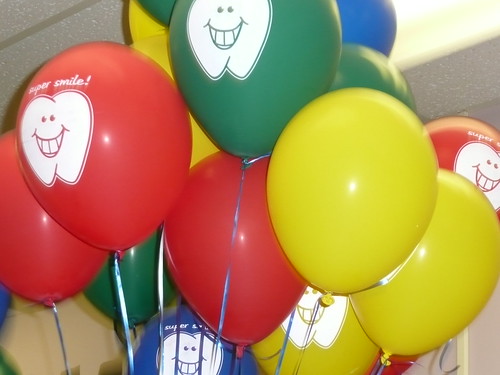Resources for Health Providers & Advocates
Maternal & Child Oral Health Resources
Oral Health for Infants, Children, Adolescents, and Pregnant Women Knowledge Path. This knowledge path about oral health for infants, children, adolescents, and pregnant women has been compiled by the National Maternal and Child Oral Health Resource Center (OHRC) and the Maternal and Child Health Library at Georgetown University. It offers a selection of current, high-quality resources that analyze data, describe effective programs, and report on policy and research aimed at improving access to oral health care and quality of oral health for infants, children, adolescents, and pregnant women. A separate section lists resources for consumers. The final part of the knowledge path presents resources on specific aspects of oral health: child care and Head Start, dental caries, dental sealants, fluoride varnish, K–12 education, pregnancy, school-based and school-linked care, and special health care needs. This knowledge path is designed for health professionals, program administrators, educators, policymakers, and consumers, and it will be updated annually.
The Oral Health Resource Bulletin is a series prepared by the National Maternal and Child Oral Health Resource Center that provides information about current materials of interest. A brief synopsis and acquisition information is provided for each item. Volume XXVI, December 2011.
Oral Health Care During Pregnancy: A Summary of Practice Guidelines summarizes the New York State Department of Health’s publication, Oral Health Care During Pregnancy and Early Childhood: Practice Guidelines, which is geared toward prenatal and oral health professionals. The guidelines are intended to bring about changes in the health care delivery system and to improve the standard of care for pregnant women. (8 pages)(National Maternal & Child Oral Health Resource Center)
Access to Oral Health Care During the Perinatal Period: A Policy Brief was developed to help professionals and the public better understand the importance of oral health during the perinatal period. The brief describes barriers to accessing oral health services and information—including myths and misperceptions—and presents potential solutions. (8 pages)(National Maternal & Child Oral Health Resource Center)
Maternal Oral Health Resource Guide provides information aimed at improving oral health care for pregnant women. It is divided into three sections: journal articles, materials, and organizations. (32 pages)
Strategies to Improve Health by Enhancing the Integration of Oral Health and Maternal and Child Health Programs explains how to improve oral and general health. Topics include the importance of oral health, the benefits of integrating oral health and MCH activities, and areas for collaboration. (4 pages)
Bright Futures Toolbox is a national disease prevention and health promotion initiative funded by the Maternal and Child Health Bureau. This toolbox highlights materials that advance the Bright Futures philosophy of promoting and improving the oral health of infants, children, and adolescents.
Special Care: An Oral Health Professional’s Guide to Serving Young Children with Special Health Care Needs is a distance learning curriculum for oral health professionals. Four continuing education credits are available to registered users upon successful completion. (Online)
Promoting the Oral Health of Children with Special Health Care Needs: In Support of the National Agenda provides suggestions for oral-health-promotion activities. It addresses the six critical indicators of a comprehensive system of care identified by the Maternal and Child Health Bureau: (1) medical home, (2) insurance coverage, (3) screening, (4) organization of services, (5) family roles, and (6) transition to adulthood. (4 pages)
Head Start Resources
Head Start Resources from the National Maternal and Child Oral Health Resource Center. This section of OHRC’s Web site highlights information that is especially relevant to those who work with Head Start.
Head Start Oral Health Resource Guide describes a variety of resources including recent journal articles, materials for use by health professionals and Head Start staff, and organizations that may serve as additional resources. (49 pages)
Dentists and Head Start: What You Should Know and How You Can Help provides information about how dentists can help address the oral health needs of pregnant women, infants, and children enrolled in Head Start. (4 pages)
Dental Hygienists and Head Start: What You Should Know and How You Can Help provides information about how dental hygienists can help address the oral health needs of pregnant women, infants, and children enrolled in Head Start. (4 pages)
Resources for Oral Health Advocates
Seal America: The Prevention Invention, 2nd Edition, is an online manual designed to assist health professionals in initiating and implementing a school-based dental sealant program to prevent tooth decay in children. (Online)
Mobile-Portable Dental Manual is an online manual focusing on using public health approaches to create health care systems to serve populations that have difficulty accessing the traditional system of oral health service delivery. Produced in collaboration with the Association of State and Territorial Dental Directors and the American Association for Community Dental Programs. (Online)
Dental Sealant Resource Guide (2nd ed.) provides information about dental sealants and promotes their use in preventing dental caries. The guide lists journal articles, materials, and organizations that may serve as additional resources. (25 pages)
A Way with Words: Guidelines for Writing Oral Health Materials for Audiences with Limited Literacy – This fact sheet provides tips on writing oral health educational materials that are easy for everyone to understand. It offers suggestions on word choice, eliminating unnecessary words, sentence and paragraph structure, and presenting unfamiliar terms to communicate most effectively with people with limited health literacy. The fact sheet includes resources and contact information. This publication is available for U.S. requests only.


